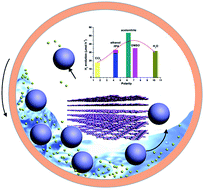Structure disorder of graphitic carbon nitride induced by liquid-assisted grinding for enhanced photocatalytic conversion†
Abstract
Graphitic-C3N4 with a disordered structure was processed for the first time by a liquid-assisted planetary ball milling approach. Through this simple and effective mechanochemistry method, the milled samples displayed outstanding visible-light photoactivity and the optimized one showed 7-fold higher H2 evolution rate than the bulk one.


 Please wait while we load your content...
Please wait while we load your content...